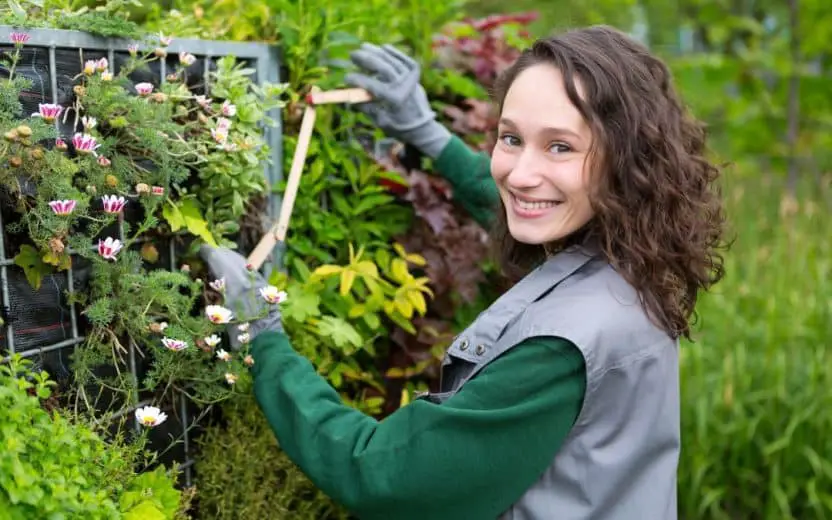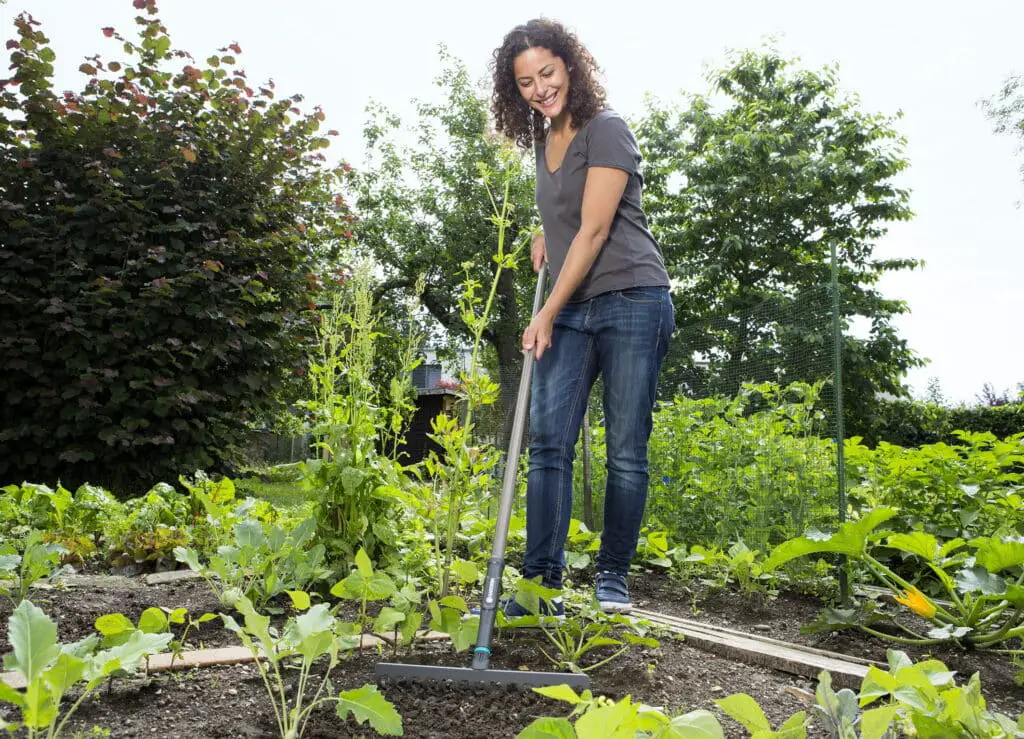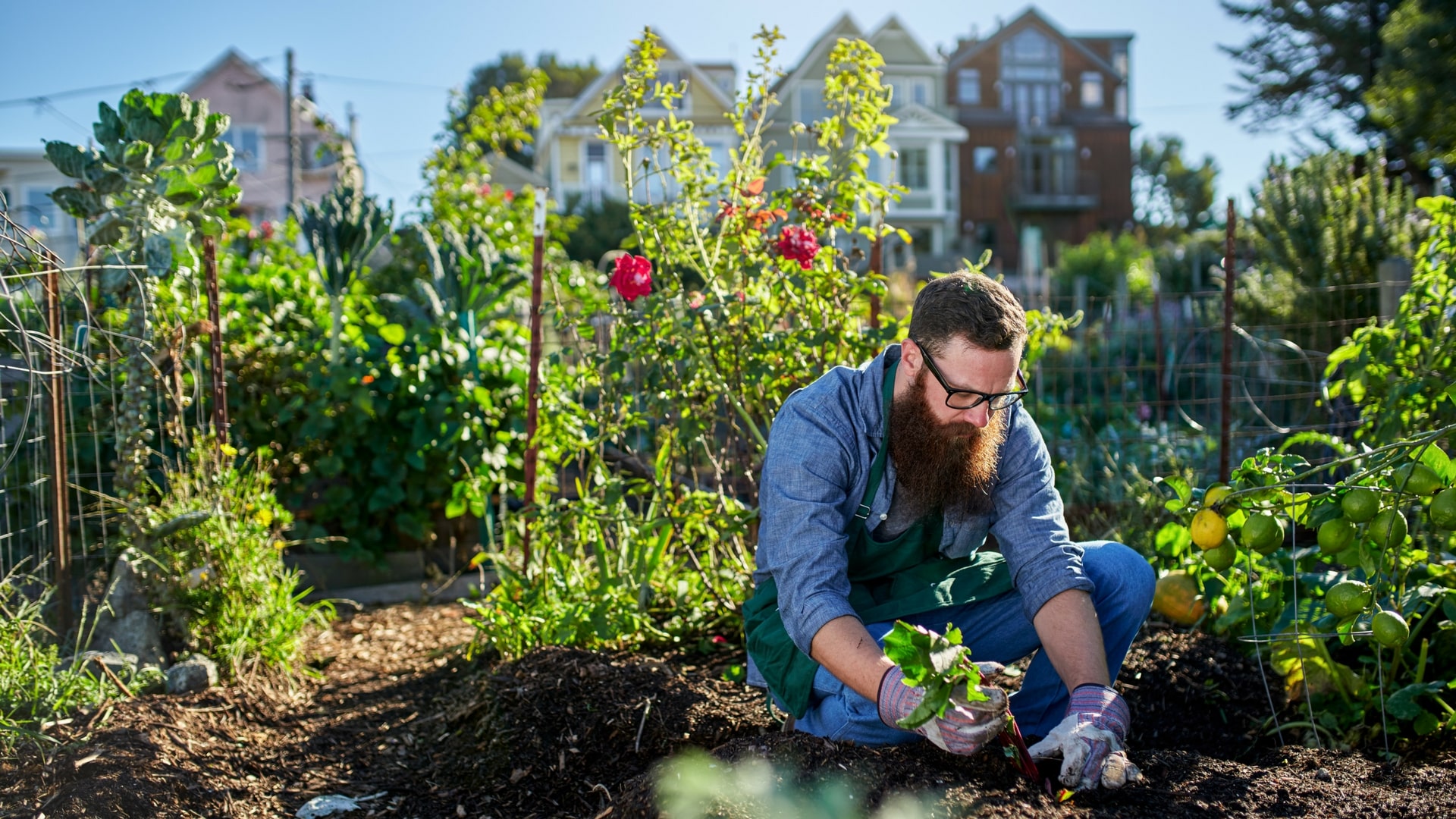What Is Electroculture Gardening
What Is Electroculture Gardening: Electroculture gardening is a unique and innovative approach to gardening that harnesses the power of electricity to enhance plant growth and improve overall crop yield. This method involves the use of low-voltage electrical currents to stimulate the growth and development of plants, resulting in healthier and more productive gardens.
Electroculture gardening is based on the principle that plants respond positively to electrical stimulation. It is believed that the electrical currents help to activate the natural processes within plants, such as nutrient absorption, photosynthesis, and cell division. By providing the right amount of electrical energy, gardeners can optimize these processes and promote optimal plant growth.
One of the key benefits of electroculture wall gardening is its ability to increase crop yield. The electrical currents stimulate the roots of plants, encouraging them to absorb more nutrients from the soil. This leads to stronger and healthier plants that are better equipped to resist diseases and pests. Additionally, the increased nutrient absorption results in larger and more abundant fruits and vegetables.
Another advantage of electroculture gardening is its potential to improve soil quality. The electrical currents help to break down organic matter in the soil, making nutrients more readily available to plants. This can be particularly beneficial in areas with poor soil conditions, as it can help to revitalize the soil and make it more fertile. Additionally, the electrical stimulation can promote the growth of beneficial microorganisms in the soil, further enhancing its overall health.

What is the concept of electroculture?
History is what lěktrəˈkʌltʃə means. power that is used to help plants grow in farming or gardening.
Electricity is used in electroculture to help plants grow and improve farming methods. It thinks that electricity currents help plants grow and help farmers get more crops. Electroculture is based on the idea that plants can react to electrical signals in different ways. Electrical currents help plants grow, take in nutrients, and stay healthy. This can boost food yields and quality while cutting down on the use of chemical pesticides and fertilizers.
In electroculture, plates are put in the ground or on plants to use electricity. Plants can’t grow and develop properly if these electrodes don’t send enough electricity. Electrical currents can help roots grow, take in nutrients, and fight off sickness and bugs.
In a different type of electroculture, electromagnetic waves help plants grow. Either electromagnetic coils or radio frequency devices can make these fields. Electrical forces change the metabolism and cellular processes of plants, which impacts their growth and development. Tests and studies have shown that electroculture works well. Electric currents or electromagnetic fields have been shown to improve the health and output of plants.
How do you use copper wire in a garden?
Copper wire is necessary for electrocultural farming because it can carry electricity. Wire is useful for many things in the yard. Copper wire is flexible and great for decorating, keeping pests away, and holding plants. Use copper wire in your yard in these ways.
Copper wire is often used in parks to hold plants up. Plants can grow straight and not fall over with the help of copper wire trellises, cages, and pegs. Copper wire is very strong, so it will last all season. You can bend it to fit your plants.
Another good thing about copper wire in gardening is that it keeps pests away. Putting copper wire around the bottom of plants or pots will keep slugs and snails away. These pests might not be able to hurt your plants because the sharp edges of the wires bother them. Copper’s natural color makes your yard look nice, and its flexibility lets you make your creative ideas come to life. Copper wire can help you with your yard. Copper wire can make your yard look better and be more useful.
What is the process of gardening?
The gardener attends to a number of basic processes: combating weeds and pests; using space to allay the competition between plants; attending to feeding, watering, and pruning; and conditioning the soil.
Gardening is the process of cultivating and tending to plants in order to create a beautiful and functional outdoor space. It involves various activities such as planting, watering, weeding, and pruning. Gardening can be done on a small scale in a backyard or on a larger scale in a community garden or farm.
One of the first steps in the gardening process is planning. This involves deciding what types of plants to grow, where to plant them, and how to arrange them in the space. It is important to consider factors such as sunlight, soil type, and climate when planning a garden. Once the planning is done, the next step is preparing the soil. This may involve removing weeds, adding compost or fertilizer, and loosening the soil to improve drainage.
After the soil is prepared, the next step is planting
This involves placing seeds or seedlings into the soil and covering them with a layer of soil or mulch. It is important to follow the planting instructions for each type of plant, as different plants have different requirements for spacing and depth. This is especially important during dry periods or when the plants are first establishing their roots.
In addition to watering, plants also need to be cared for through regular maintenance. This includes activities such as weeding, pruning, and fertilizing. Weeds can compete with plants for nutrients and water, so it is important to remove them regularly. Pruning helps to shape plants and promote healthy growth, while fertilizing provides plants with the nutrients they need to thrive.
Gardening is a rewarding process that allows individuals to connect with nature and create a beautiful outdoor space. It requires planning, preparation, and ongoing maintenance, but the end result is a vibrant and flourishing garden.
What are the three steps of gardening?
3 Steps Successful Gardeners Use to Start a Garden
- STEP ONE: UNDERSTAND YOUR GARDEN SITE. To understand your site you need to perform a site analysis. …
- STEP TWO: DEVELOP A STYLE. The next step is to develop a garden style. …
- STEP THREE: SELECT YOUR PLANTS. Select plants that are well suited to your site and garden style.
Gardening is a popular hobby that involves cultivating and tending to plants, flowers, and vegetables. It not only provides a sense of satisfaction and accomplishment but also offers numerous health benefits. Whether you are a beginner or an experienced gardener, understanding the three essential steps of gardening is crucial for successful plant growth and maintenance.
Step 1: Planning and Preparation
The first step in gardening is planning and preparation. This involves selecting the right location for your garden, considering factors such as sunlight, soil quality, and drainage. It is important to choose a spot that receives adequate sunlight for the type of plants you wish to grow. Additionally, assessing the soil quality and making necessary amendments, such as adding compost or fertilizer, is essential for providing the plants with the necessary nutrients.
Step 2: Planting
Once you have prepared the garden bed, the next step is planting. It is important to consider the climate and growing conditions of your region to choose plants that are suitable for your area. Additionally, following proper planting techniques, such as digging the right-sized hole and spacing the plants correctly, is crucial for their healthy growth.
Step 3: Maintenance and Care
The final step in gardening is maintenance and care. This involves providing the plants with regular watering, fertilizing, and pruning as needed. It is important to monitor the plants for any signs of pests or diseases and take appropriate measures to prevent or treat them. Regular weeding and mulching can also help in maintaining a healthy garden by preventing the growth of unwanted plants and conserving moisture.
What is the introduction of gardening?
We define gardening as taking care of a plant’s needs, including sunlight, water intake, nutrition, ventilation, temperature, etc.
Gardening is the practice of growing and cultivating plants as part of horticulture. It involves the cultivation of ornamental plants, fruits, vegetables, herbs, and even medicinal plants. Gardening can be done in various settings, including private gardens, public parks, and even on rooftops or balconies.
Gardening has been practiced for centuries and has evolved over time. It is not only a hobby but also a form of art and a way to connect with nature. Many people find gardening to be a therapeutic and relaxing activity that allows them to escape the stresses of daily life.
There are different types of gardening, each with its own unique characteristics. Some popular types include flower gardening, vegetable gardening, container gardening, and landscape gardening. Flower gardening focuses on growing and arranging flowers for aesthetic purposes, while vegetable gardening involves growing edible plants for consumption.
Container gardening is a type of gardening that is done in containers
Such as pots or planters, rather than in the ground. This type of gardening is ideal for those with limited space, such as apartment dwellers. Landscape gardening, on the other hand, involves designing and creating outdoor spaces that are aesthetically pleasing.
Gardening requires various skills and knowledge, including understanding plant biology, soil composition, and pest control. It also requires regular maintenance, such as watering, pruning, and fertilizing. However, the rewards of gardening are numerous. Not only does it provide fresh produce and beautiful flowers, but it also promotes physical activity and mental well-being.
Electroculture gardening is a unique approach to gardening that utilizes the application of low-level electrical currents to enhance plant growth and yield. Unlike traditional gardening methods that rely solely on natural factors such as sunlight, water, and soil nutrients, electroculture introduces an artificial electrical stimulus to the plants.
This electrical stimulus is believed to stimulate the plants’ natural growth processes, resulting in accelerated growth, increased nutrient absorption, and improved overall plant health. Traditional gardening methods, on the other hand, rely on natural factors and conventional practices such as watering, fertilizing, and pest control.
What are the benefits of using electroculture techniques in gardening?
The use of electroculture techniques in gardening offers several benefits. Firstly, it has been observed that electroculture can significantly enhance plant growth and yield. The electrical currents stimulate the plants’ root systems, leading to increased nutrient uptake and improved overall plant health.
Additionally, electroculture techniques can help reduce the need for chemical fertilizers and pesticides. By enhancing the plants’ natural growth processes, they become more resistant to pests and diseases, reducing the reliance on harmful chemicals. This not only benefits the environment but also promotes healthier and safer produce.
Electroculture gardening has the potential to improve soil health and fertility. The electrical currents stimulate microbial activity in the soil, promoting the breakdown of organic matter and nutrient cycling. This can lead to improved soil structure, increased nutrient availability, and enhanced overall soil fertility.
Can electroculture gardening improve plant growth and yield?
Yes, electroculture gardening has shown promising results in improving plant growth and yield. The application of low-level electrical currents stimulates the plants’ root systems, leading to increased nutrient absorption and improved overall plant health. This, in turn, can result in accelerated growth and higher yields.
Electroculture techniques have been found to enhance the plants’ natural growth processes, such as cell division and photosynthesis. This can lead to stronger and healthier plants, with increased resistance to pests and diseases. Additionally, electroculture can improve the plants’ ability to withstand environmental stressors, such as drought or extreme temperatures.
What are the benefits of using electroculture techniques in gardening?
Electroculture techniques in gardening offer several benefits that differentiate them from traditional gardening methods. One of the main advantages is the potential for increased plant growth and yield. Electroculture involves the use of low-level electrical currents or frequencies to stimulate plant growth and enhance nutrient uptake. This can result in healthier and more productive plants, leading to higher yields and better crop quality.
Another benefit of electroculture techniques is their potential to improve soil health and fertility. The electrical currents or frequencies used in electroculture can help break down organic matter in the soil, making nutrients more readily available to plants. This can lead to improved soil structure, increased microbial activity, and enhanced nutrient cycling. As a result, electroculture gardening can contribute to the long-term health and sustainability of the soil, reducing the need for synthetic fertilizers and chemical inputs. “
Can electroculture gardening improve plant growth and yield?
Electroculture gardening is a technique that involves the use of low-level electrical currents to stimulate plant growth and enhance crop yield. This method differs from traditional gardening methods in that it harnesses the power of electricity to optimize plant growth and maximize productivity. By applying controlled electrical currents to the soil or directly to the plants, electroculture gardening aims to create an ideal environment for plant growth. One of the main benefits of using electroculture techniques in gardening is the potential for improved plant growth and yield. The electrical currents stimulate the root systems of plants, promoting nutrient uptake and enhancing overall plant health.
This can result in stronger, more resilient plants that are better able to withstand environmental stressors such as drought or disease. Additionally, electroculture gardening has been shown to increase the efficiency of photosynthesis, leading to higher rates of carbon dioxide absorption and oxygen production. Furthermore, electroculture gardening can also improve the quality of crops. The controlled electrical currents can enhance the flavor, color, and nutritional content of fruits and vegetables. This can be particularly beneficial for organic farmers or those looking to produce high-quality, nutrient-dense produce. Additionally, electroculture techniques have been found to increase the shelf life of harvested crops, reducing post-harvest losses and improving overall profitability.
How does electroculture affect soil health and fertility?
Electroculture gardening has a significant impact on soil health and fertility. The use of electrical currents in the soil can stimulate microbial activity, which is essential for nutrient cycling and organic matter decomposition. This increased microbial activity leads to improved soil structure and nutrient availability, resulting in healthier and more fertile soil.
Electroculture techniques can enhance the soil’s ability to retain moisture. The electrical currents create electro-osmotic flow, which helps to draw water into the soil and distribute it more evenly. This is particularly beneficial in arid regions or during periods of drought, as it reduces water loss through evaporation and improves water efficiency.
Are there any potential drawbacks or limitations to practicing electroculture gardening?
While electroculture gardening offers numerous benefits and potential advantages, it is important to consider the potential drawbacks and limitations associated with this technique. One of the main limitations is the initial cost and investment required to set up an electroculture system. The equipment and technology used in electroculture can be expensive, especially for larger-scale operations. Additionally, the installation and maintenance of the necessary infrastructure may require specialized knowledge and skills.
Another potential drawback is the need for a reliable source of electricity. Electroculture techniques rely on the application of electrical currents to the soil, which requires a consistent and stable power supply. In areas with unreliable or limited access to electricity, implementing electroculture gardening may not be feasible. Furthermore, electroculture is still a relatively new and emerging field, and there is limited scientific research and data available to support its effectiveness and long-term impact. While there are anecdotal reports of improved plant growth and yield, more comprehensive studies are needed to validate these claims and understand the potential risks and unintended consequences of electroculture gardening.

Conclusion
Electroculture gardening is a unique and innovative approach to gardening that utilizes the power of electricity to enhance plant growth and overall plant health. This technique involves the use of low-voltage electrical currents to stimulate the growth and development of plants, resulting in increased yields, improved nutrient absorption, and stronger resistance to pests and diseases. Electroculture gardening has gained popularity in recent years due to its numerous benefits and potential to revolutionize traditional gardening practices. One of the key advantages of electroculture gardening is its ability to significantly increase crop yields. By applying low-voltage electrical currents to the soil or directly to the plants, electroculture stimulates the root system and enhances nutrient uptake. This leads to healthier and more vigorous plants, which in turn produce higher yields of fruits, vegetables, and flowers.
Another major benefit of electroculture gardening is its ability to enhance plant resistance to pests and diseases. The electrical currents used in electroculture stimulate the production of natural defense mechanisms in plants, making them more resistant to common pests and diseases. This reduces the need for chemical pesticides and fungicides, making electroculture gardening a more sustainable and environmentally friendly gardening method.








